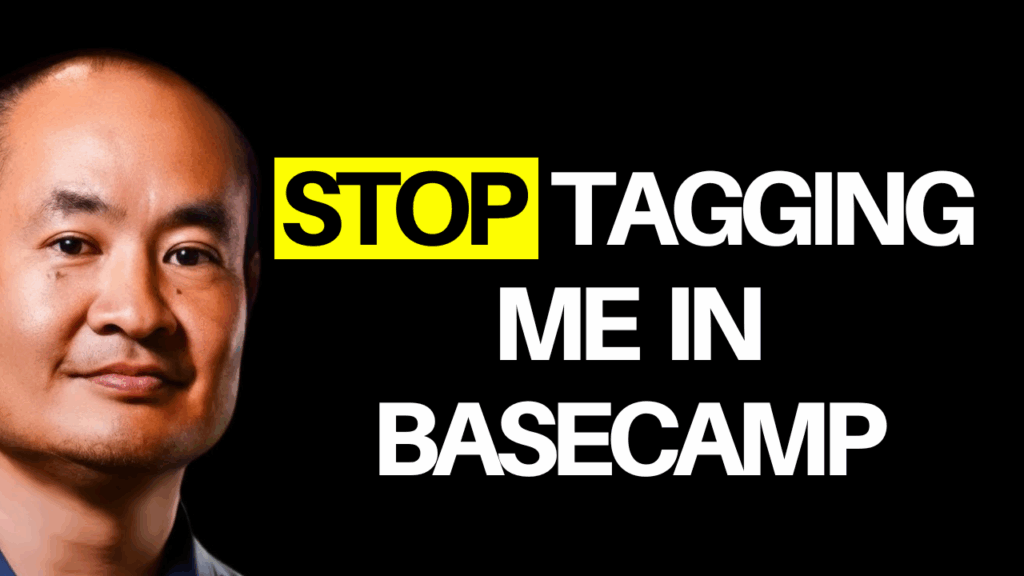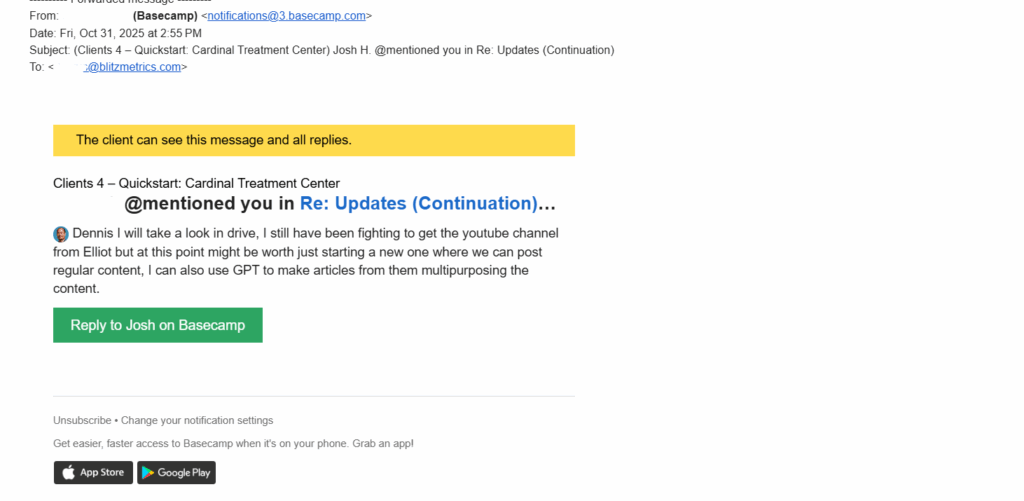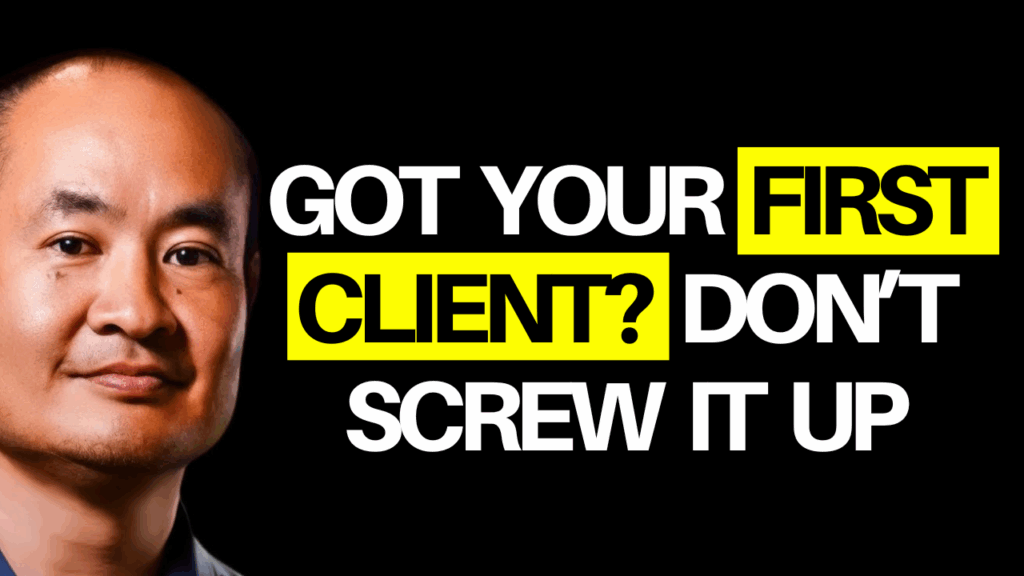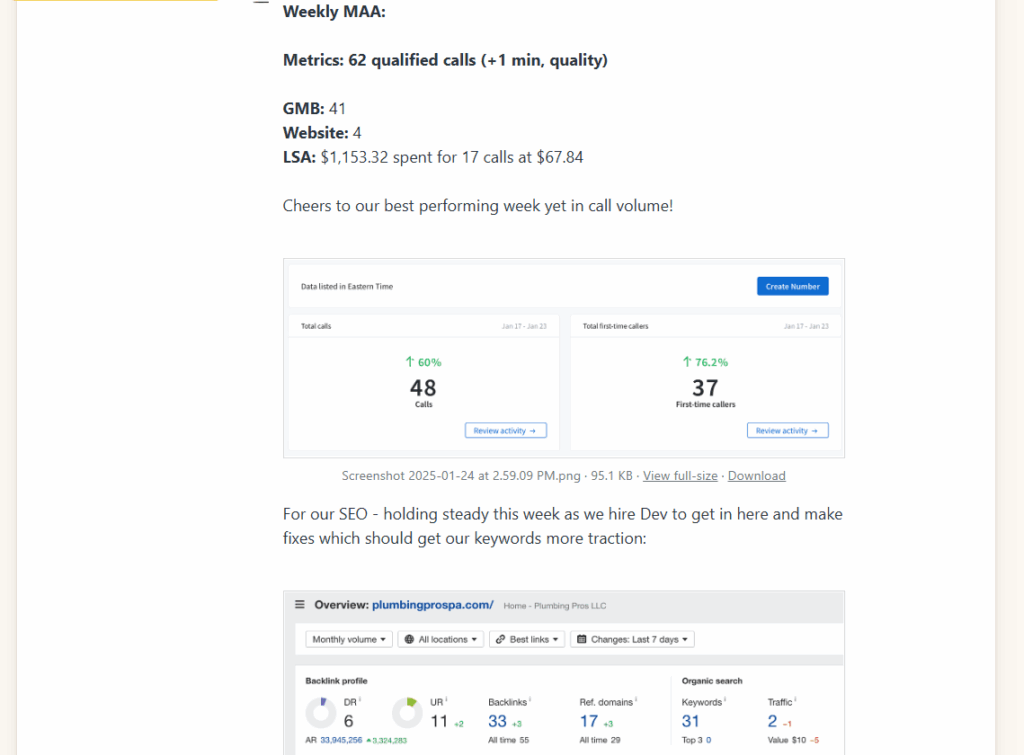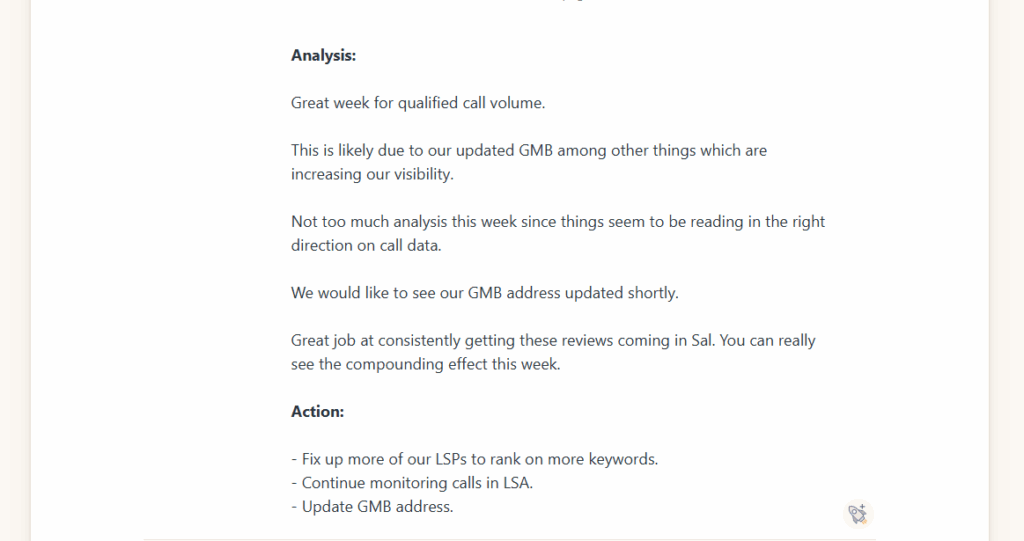Congratulations, you’ve got your first client!
That’s a huge milestone. But here’s the thing: the easiest time to keep a client happy is before they’re upset. Once things spin out of control, you’re in damage-control mode and that’s exhausting.
When you care early, communicate often, and follow the right process, you won’t have to “save” accounts. You’ll grow them.
Why Clients Stay: Results + Communication
Our clients don’t stay because of contracts.
They stay because we drive real results, and they feel cared for.
Retention happens when you:
- Deliver results consistently through the MAA process — Metrics → Analysis → Action.
- Communicate clearly every week, no matter what.
We don’t hide behind a one-year lock-in. Clients stay with us because they want to, not because they have to.
The MAA Process (Metrics → Analysis → Action)
This isn’t just another framework or template; it’s a mindset.
Every week, you’ll move through these three steps:
- Metrics: Gather the numbers. What happened?
- Analysis: What do the numbers mean?
- Action: What will we do next?
It doesn’t matter whether you’re running Google Ads, Facebook, SEO, or content. The same process applies everywhere.
Your goal? Drive more qualified phone calls that lead to real customers for your client.
The Power of the Friday Report
Every Friday (or Thursday if you’re ahead), send your optimization report.
Even if you don’t have big changes to announce, your consistency shows you care.
Clients should never wonder, “What’s happening?”
The moment they stop hearing from you, they assume you’ve stopped caring. And that’s the #1 reason clients leave, not bad performance, but lack of perceived care.
If you’re sick, traveling, or have weak Wi-Fi, still message them. Even a quick “Hey, I’ll send the update tomorrow, just want you to know I’m on it” goes a long way.
Handling the Unexpected
Stuff breaks, websites crash, ads stop running, Google updates happen.
That’s life in digital marketing.
When things go sideways:
- Don’t panic.
- Triage. Figure out what matters most.
- Communicate. Tell the client what’s happening and what you’re doing.
Most clients are understanding, especially compared to their last three agencies that ghosted them or sent useless, automated reports.
When you care, analyze, and take action, you stand out instantly.
Learn Before You Lead
You’re part of a team now, and eventually, you’ll lead one.
But before you manage others, master the process yourself.
Do the work first. Learn the system.
Then, when your teammates get stuck, you’ll know how to guide them.
That’s how we grow.
Why Feedback is Gold
Weekly reports aren’t just for clients; they’re feedback loops for you.
Sometimes clients will say:
“This looks awesome, great job!”
Or even:
“Turn the marketing down, we’re booked out for two weeks!”
Other times, they’ll raise concerns. That’s fine too. It keeps communication alive and helps you improve faster than any course ever could.
Keep Optimizing
No one ever becomes “done learning.”
Even the most experienced marketers keep refining how they use data and tools.
Treat every week like another rep in the gym, small, steady improvements that add up over time.
Remember: you don’t win by sprinting. You win by showing up consistently.
Final Thought
Client success isn’t about being a “guru.” It’s about being reliable, thoughtful, and proactive.
Do what you say you’ll do, communicate clearly, and improve week after week.
That’s how you build a career. That’s how you make clients stay.
And that’s how you win, one Friday report at a time.

